
Franciscan Prayer : Prayer of Thanksgiving



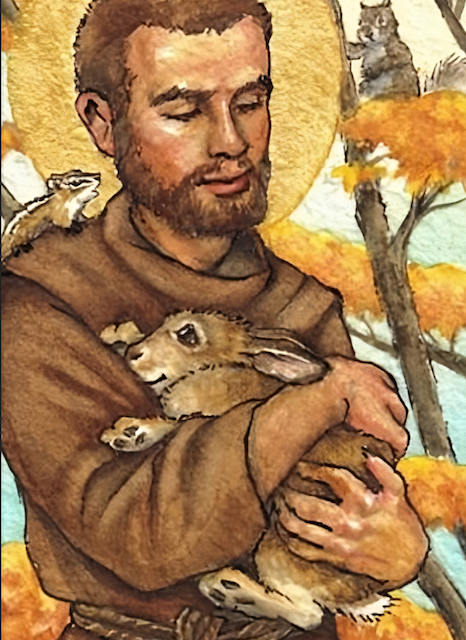
In the first official biography of St Francis of Assisi, the author Thomas of Celano, one of the Saint’s first companions, wrote:
“Once while he (Francis) was staying near the town of Greccio, a certain brother brought him a live rabbit caught in a trap. Seeing it, the most blessed man was moved with tenderness. ‘Brother rabbit,’ he said, ‘Come to me. Why did you let yourself get caught?’ As soon as the brother holding it let go, the rabbit, without any prompting, took shelter with the most holy man, as in a most secure place, resting in his bosom. After it had rested there for a little while, the holy father, caressing it with motherly affection, let it go, so that now free it would return to the woods. As often as it was put on the ground, it rushed back to the holy man’s lap, so he told the brothers to carry it away to the nearby forest. Something similar happened with another little rabbit, a wild one, when he was on the island in the Lake of Perugia.”
Life of St Francis, Chapter XXI
There are numerous stories of how Francis extended the same loving care towards birds, fish and even earthworms, and how he praised the Creator through all created things. It is no wonder that Pope John Paul II named Francis of Assisi the Patron Saint of Ecology on 29 November 1979.

The story of Francis and the rabbit gives us an example of how we can live the reality of fraternity with every person and all creatures:
1. Be moved with tenderness: The brother who brought the rabbit saw the creature as food. Francis saw it not as a thing, but as a brother.
2. Welcome others into your life: We live in a world of fear, and people try to protect themselves because they have been hurt and threatened in many ways. Francis was so secure in himself and so welcoming in his love for all, that the rabbit instinctively knew it could run to him and find refuge.
3. Do not cling to anything or anyone: The rabbit wanted to stay with Francis, and Francis might have been tempted to keep the rabbit as a pet. But he knew that wild rabbits are meant to be free, and he found his own freedom in letting go.
4. Don’t stop at one act of generosity: As Thomas of Celano wrote, “A similar thing happened with another little rabbit, a wild one, when he was on the island in the Lake of Perugia.”
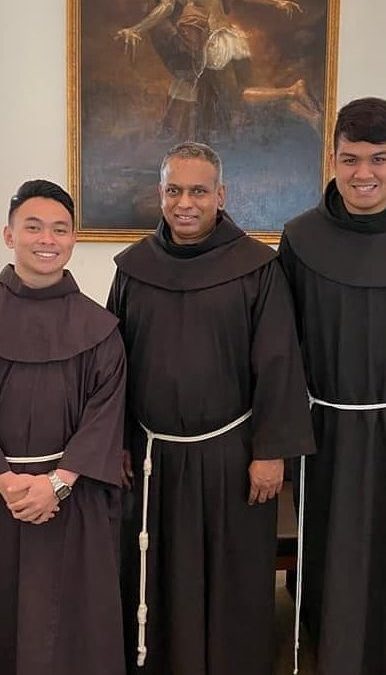
We are blessed to have two new novices in 2023. On 14 January, Friar Peter Michael, Director of the Novitiate at St Anthony Friary, received Friars Jorgerson Japar and Nicholas Lee into the Novitiate programme.
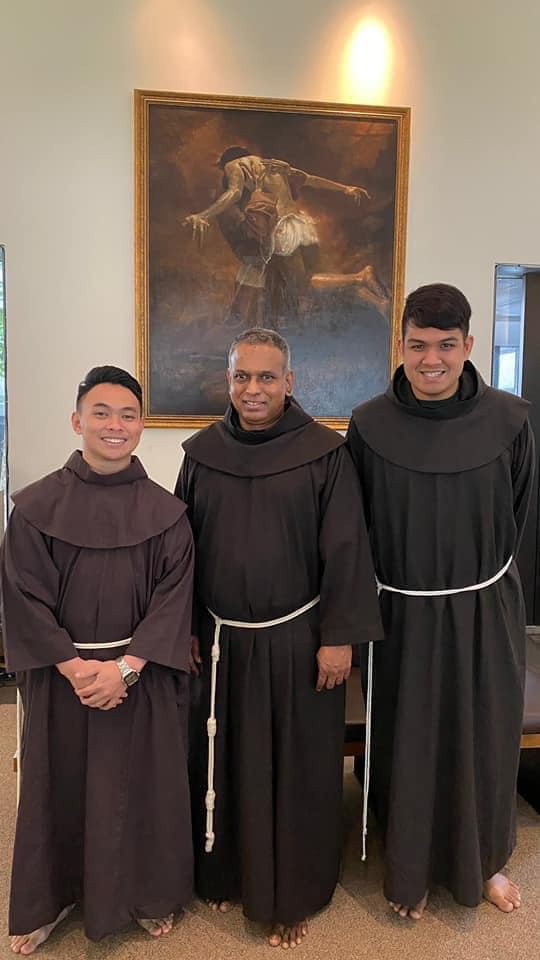
Novitiate is a sacred time during which the novices undergo an intense period of formation to know and experience the Franciscan way of life. It is a year for them to understand themselves, to form their minds and hearts more deeply in the spirit of St Francis, and to test their resolution and suitability for the life of a friar.
The novices begin their day with Morning Prayer and Mass at 7 am. They then attend classes on Franciscan Spirituality, Franciscan History, the Writings of St Francis and St Clare, and the Constitutions of the Order. At noon, they have Midday Prayer followed by lunch and then personal time. At 6 pm, they gather with the rest of the community for Evening Prayer followed by dinner and then Night Prayer at 8 pm.
Novices also have household chores. They cook for the community twice a week and do some cleaning and gardening. On Thursday mornings, they assist in teaching Catechism classes at St Anthony’s Primary School.
Please keep Jorgerson and Nicholas in your prayers as they continue on their Novitiate journey.
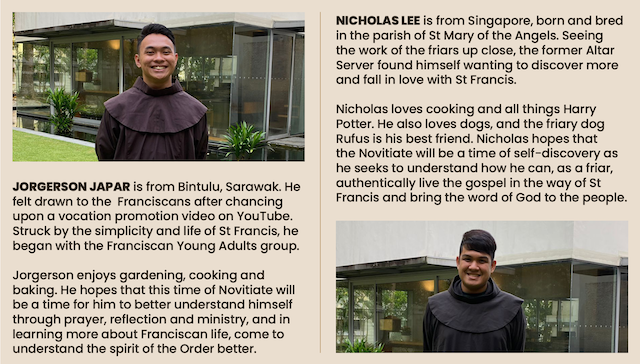
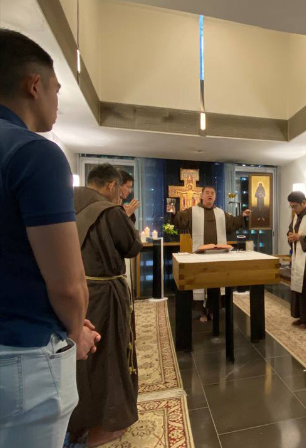
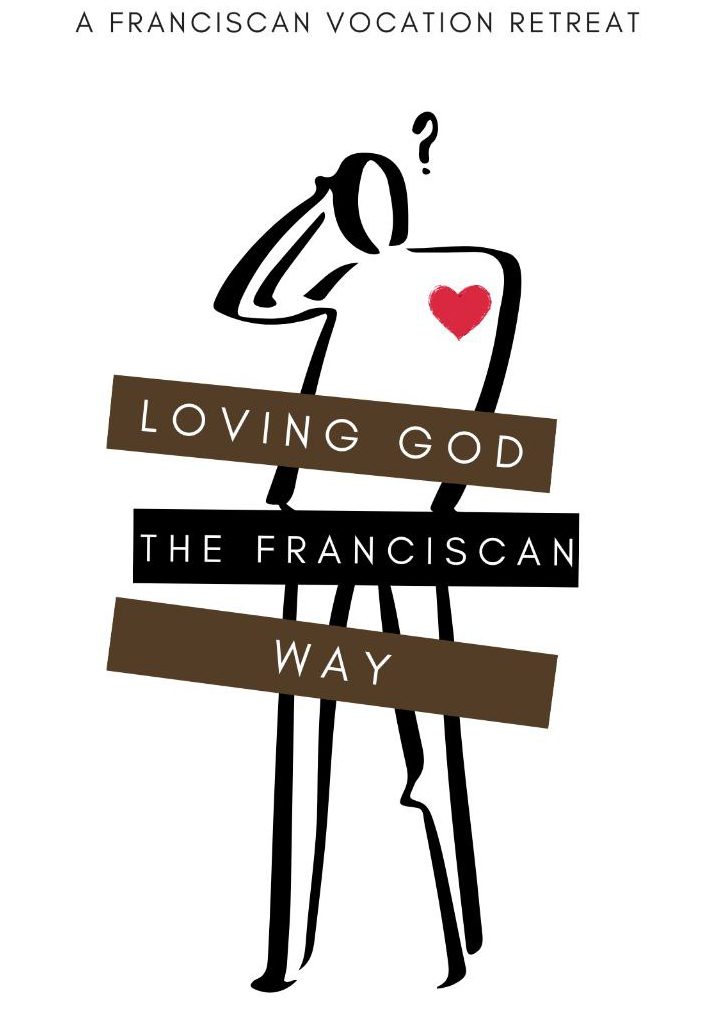
Fifteen young men joined the Franciscan Vocation Discernment Retreats held in Singapore and Kuching last November and December. The aspirants accepted the invitation to Come and See Franciscan spirituality and the Franciscan way of life for different reasons, but they all shared the same desire: to seek the will of God in their lives.
Friar Giacomo Bini OFM, former Minister General of the Franciscan Order, said, “Nowadays, fraternal holiness is more effective than personal holiness.“ Inspired by this wisdom, the retreat was planned to help the aspirants learn more about God and about themselves through a fraternal living experience.
Over four days and three nights, they prayed, reflected, ate and shared as a fraternity. It was a safe space where everyone could be open and honest in sharing. The aspirants came as individuals, but it did not take long for each to feel a sense of belonging to the fraternity they formed during the retreat.

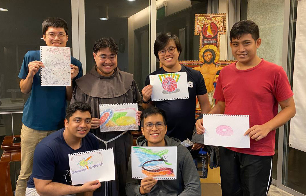
Eight aspirants (from Singapore and West Malaysia) at the retreats in Singapore (3-6 November and 15-18 December) and seven (from Sarawak, East Malaysia ) at the retreat in Kuching (1-4 December).
The new “fraternity” in Kuching was even inspired to compose a song together. They titled their song “Panggilan Hidupku” (My Vocation).
The aspirants left the retreat grateful for the brief experience of Loving God the Franciscan Way. Some expressed interest in discerning more intensively about a vocation to the Order in the next few years. Others said that the experience had opened their eyes to new possibilities and would help them make more informed decisions.
The friars involved too were grateful for the retreat experience. As Friar Robin Toha, who is part of the Vocation Team, said, “It is a joy to share life with the aspirants. Often, their stories inspire me and renew my commitment and desire to love and serve God and others as a friar.”
We ask for your prayers for these young men as we continue journeying with them, that they may discern the will of God for their lives.

